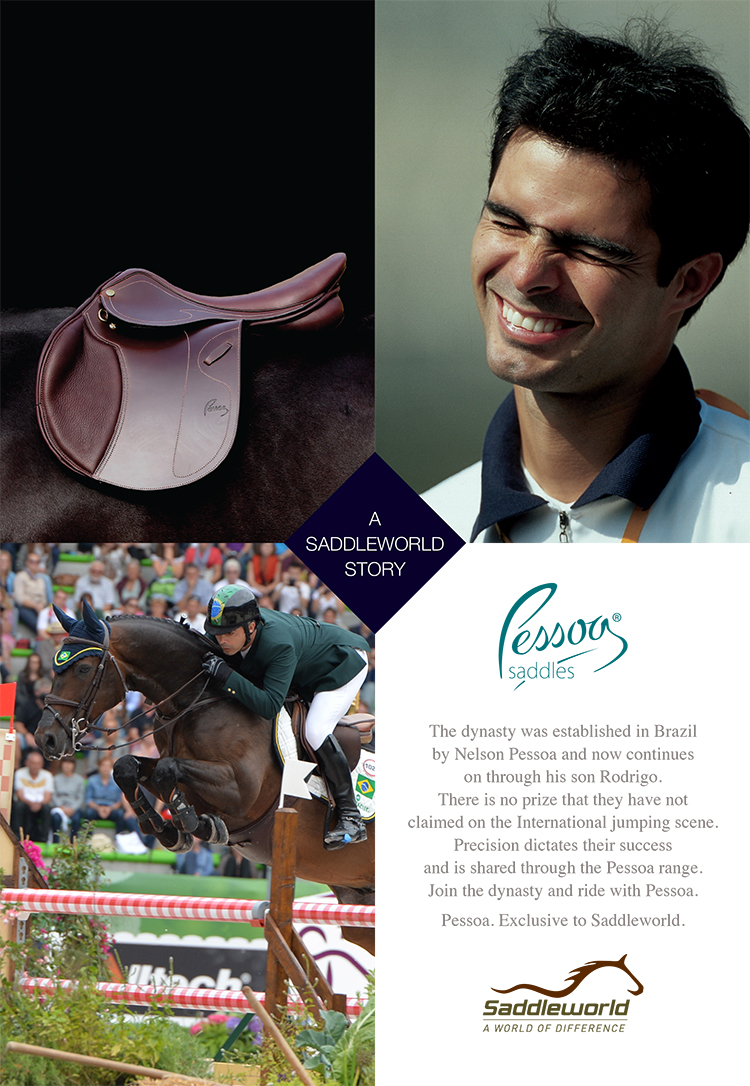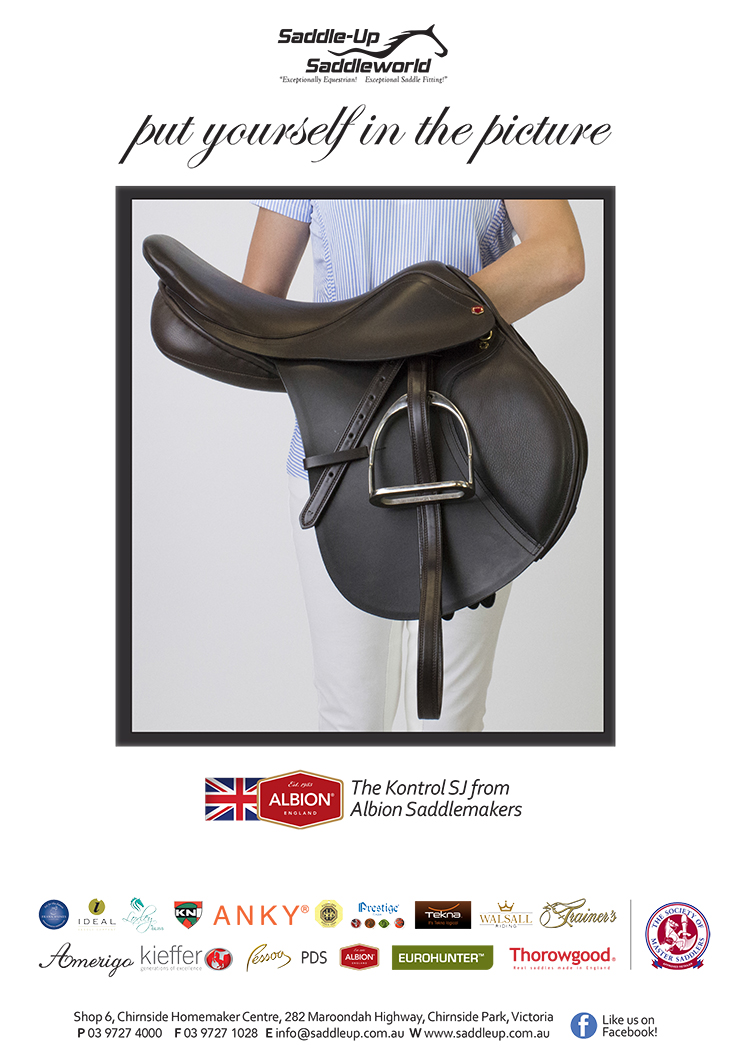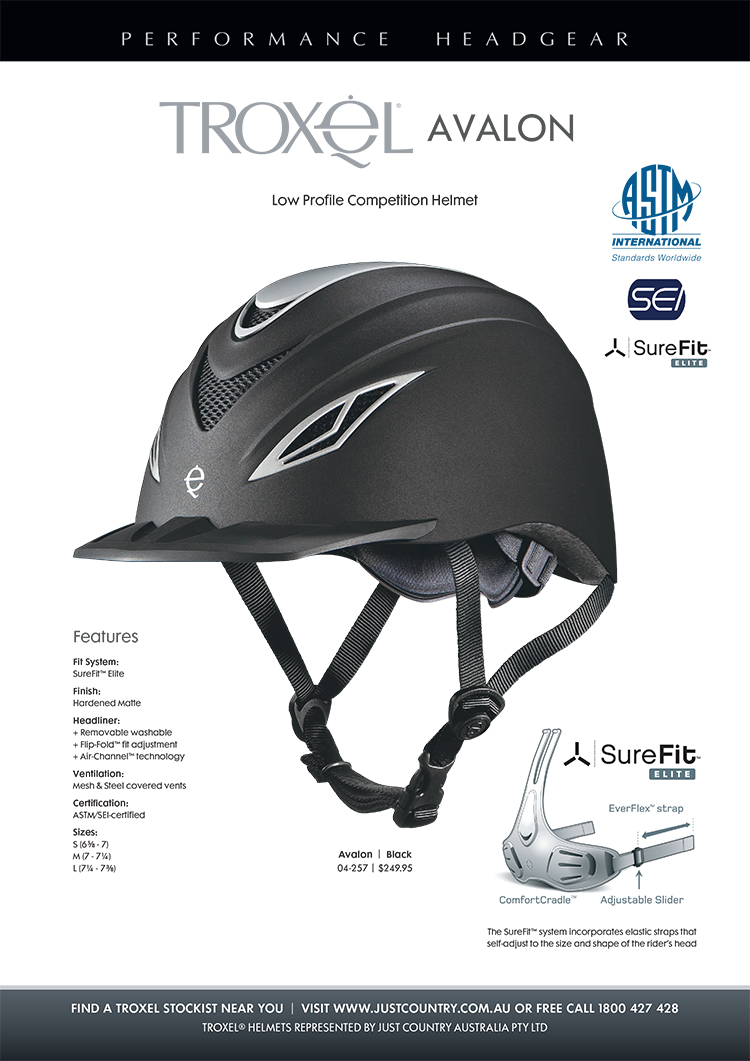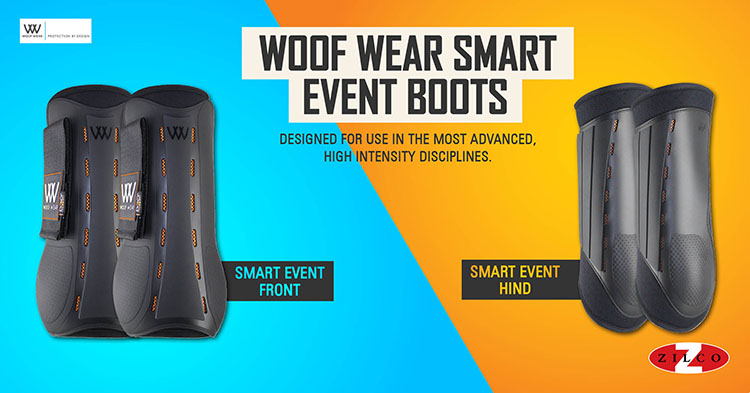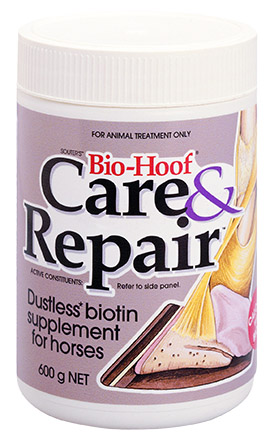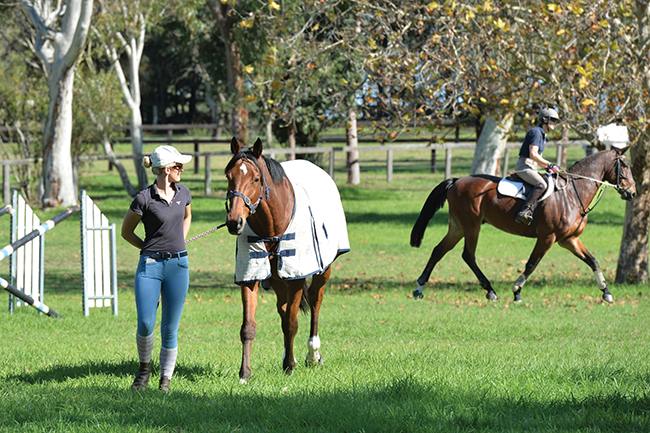 Visiting Kiwi, Anna Stenberg works with one of Australia’s jumping stars…
Visiting Kiwi, Anna Stenberg works with one of Australia’s jumping stars…
Story and photos by Roz Neave
The Roycroft stables at Mt White have been the setting for the discussion of many training truths over the years. The great George Morris has spread his wisdom and demonstrated what he preaches, many of our Olympic and WEG representatives, have honed their skills riding among the trees in the green paddocks. So it was appropriate that when I arrived to do this story with Vicki and her working pupil, Anna Stenberg, there was Vicki riding in the jumping paddock on a horse she bred, Reebok, by a stallion she imported, and competed, Premier des Hayettes.
Then it was the turn of her pupil, Anna, who was riding Reebok St James, an off the track Thoroughbred that Vicki has competed with success up to 1.40m level.
After the session, we talked, Vicki was full of praise for her student:
“Anna is from NZ, she has been working with me the last couple of months. She is quite a nice rider, she’s got a great attitude, she really wants to learn – beautiful physique for a rider, tall, skinny girl, long legs, all the things you’d want, lucky thing….
The horse is an eight-year-old Thoroughbred that has been very successful. He’s placed in futurities, Melbourne Royal and things like that. He’s just got a few technical issues, he is not very good with his front end, he is a stiff Thoroughbred, he’s not a hot Thoroughbred, so the softer you can get him in his work, then the better he jumps, and then he does start to improve his front end. He is a very scopey horse, he is a very careful horse, it is just a matter of getting him a little less stiff, and going straighter, and the front end working, but that is the story of most horses. Making their rideability and their balance better.”
“And for the rider, it’s the same – the balance. The balance of the rider is so important, but that is where this girl is quite good. The comparison I make, is if you are carrying a bag of feed on your shoulders and that bag of feed is off to one side or back a little too much, it is difficult to carry, and you get tired, and you are not thinking ahead, you are looking back, thinking this is going to fall off – but if it is well balanced you can carry quite a considerable weight for quite a long distance… You as the rider are that bag of feed, and you can’t expect the horse to be balanced unless the rider is in balance. If the rider is out of balance, the horse is not going to be able to go straight, it is going to be looking back at you, but if you are doing the job, with the motion, with the horse, then it all works well. This is one of the fundamentals, you have to be in a good balance with the horse, it is a big deal to ride in a good position.”
“It’s the same with putting your heels down, why do you put your heels down? Because your lower leg is your most important aid and your weight needs to be down in your heel for you to be well-balanced, so the horse can’t shift you out of balance. If your weight is not in your heels, if it is in your knees or your bum, then you can be shifted more easily. That is the first reason you have your heels down, the second reason is to stabilize your lower leg, because that is your main voice to your horse. You have a leg that is on the girth, you have a leg that is behind the girth, depending on the aids you want to give, so it has to be still to do that. If the heel is up, the leg waves around like a flag. It has to be down and stable so you can control it.”
Exercises follow
THE EXERCISES
Your session started off with a really hard complicated one – trotting over the poles… Why do good trainers, more often than not, start by trotting over a single pole?
“It helps you focus, it’s like focusing on a fence and riding a line to a fence – it teaches you all that – without the horse actually having to jump. What we always have to remember is that the horse doesn’t want to jump, we love jumping, I’d jump all day every day if I could, but the horses don’t want to, so you have to limit their jumping to what is going to be as pleasurable as possible for them. I don’t care what people say, no horse loves jumping, basically you are making them do something they don’t want to do, and you’ve got to make it easy for them. That is why 90% of jumping is flatwork, getting them to a fence, away from the fence. As you can see I’ve got cavallettis on my arena, cavallettis on the grass, I love cavallettis, I love poles, because you can train yourself to find a distance, to find a balance, to find a line to the fence, without actually jumping a fence.”
“The poles are for the rider mainly, they don’t do much for the horse, it will teach the horse a little bit about jumping fences, but it is more to teach the rider – finding a line, finding a distance. The problem with poles is that it is a different distance from when you ride a fence. With the fence the horse is focused up on it and will help you find a distance, it is actually harder to canter a pole, than canter a fence, because you have got to find the distance earlier, and the horse won’t help you, whereas when you are cantering to a fence, all things being equal, the horse is actually looking for a distance. There are always two pairs of eyes on a fence, or in my case, one and half pairs. I hate the feeling that there is only one eye on the fence, and that it is mine.”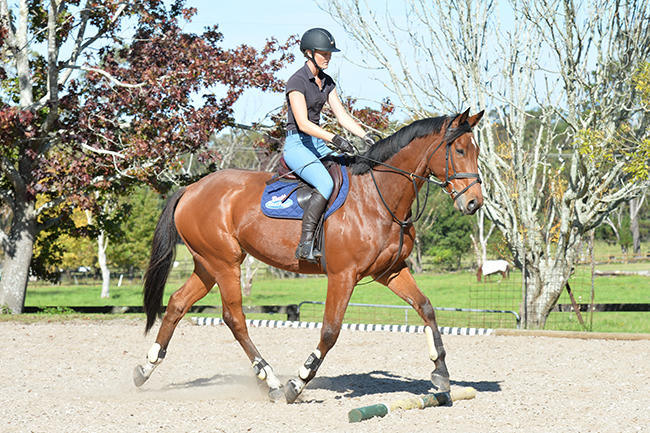
“I quite like to use short poles, because they don’t get in the way in your working area, and you have to be committed to ride them well – again, that word precise, you have to ride the line more precisely. All these things, it is like any athlete, or say a piano player, scales, something you do every day. Someone said to me, George Morris and Albert Voorn, they just use the same set of exercises all the time, well hello, the sport is about the basics. Mind you there are many ways to skin a cat, but it is all about the basics, all about having the horse working with you, and having the attitude of the horse – what would you like me to do now? That the horse is comfortable and happy with what you are doing, because you are sitting well on them, you are riding them well, they understand what you want.”
more follows
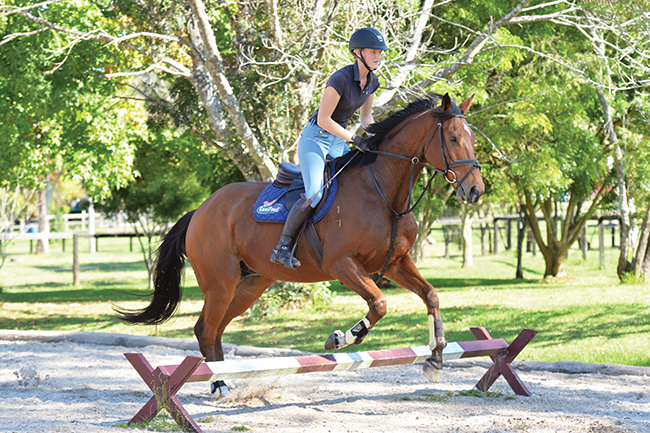
“I love the cavalletti exercises, and varying the number of strides between them. It is about 21 metres. You set them up so you can do five or six or four or seven, or whatever strides, and that teaches the riders, okay, there is more than one distance, you can add a stride or cut out a stride, if you have got the balance, you can make it work. We often make mistakes. This girl is very sweet, she keeps saying, but you never miss – No, Anna, I’ve got the canter to make a distance work, and if it is not the perfect distance, I’ll make the next distance work, it is not all about having THE DISTANCE, it’s not a Holy Grail. You hope to do it as smoothly as possible but if you do miss the distance you want, or if you’ve got a steady double of verticals coming up, and you’ve got to add a stride to get there to make it work, or you are on the clock and you’ve got to start cutting out strides, you make it work, you make the canter and the distance work.”
You were using small circles…
“I love the small circles on any horse because that will educate the short canter. Again we want a canter we can adjust, the normal stride is 12 feet, we want to be able to do 8 or 9 feet or 15 or 16. It is much easier to lengthen a stride than shorten a stride, to shorten you need to teach a collected canter, and that small circle will teach that uphill canter. It’s crazy, no one wants an uphill canter, they all want to drag their bloody heads between their knees, and I hate that. The horse has to be up in front, the wither has to be up. Yes, we want the neck down, and the poll down, but not at the cost of losing their balance. They have to learn how to carry themselves on their hind end first, I don’t care if you have their head in your lap, they have to learn to sit and travel. When they find their own balance, then they can come down with their head and neck, the small circle teaches them to sit without too much clashing aids – you can move them off the inside leg, you’ve got a giving and taking inside rein, keep the outside rein, it is just a lovely way to teach the horse and rider to create that shorter canter that you need when you are balancing the horse with the half halt. Eventually instead of the small circle, you use a half halt, and get the balance.”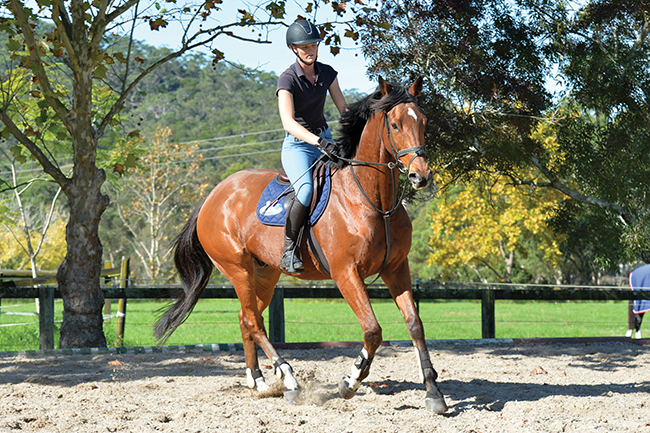
“They all want to pull the horse around too much, that’s why I am fussy about the transitions as well. Riders have to learn that slower, shorter canter is way more difficult than getting a big canter. You teach the jumper to go as slow as they can without trotting, because you don’t want them to trot, you don’t want them to do the easy thing, which is to flop out of the canter into a running trot. You have to teach the jumper how to have that short collected canter, not maintain it for hours and hours, but so the rider can half halt in the corner, so if you don’t have the distance you want, you can half halt and wait. So that the horse’s first reaction is to sit, not to lean or worse, hollow out and fall out of the canter.”
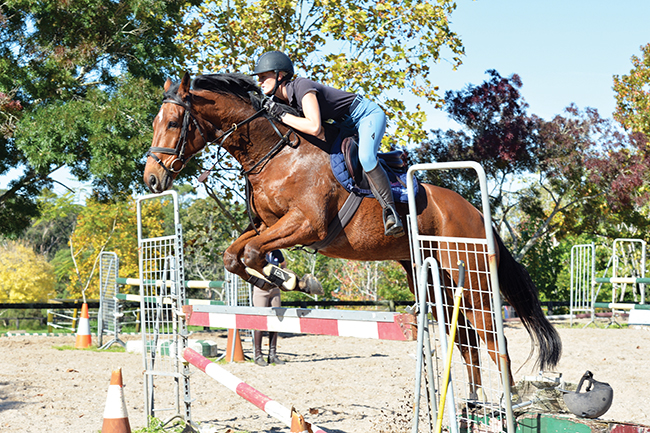 Then we moved on to some little jumping exercises, the first one was back and forth over the planks…
Then we moved on to some little jumping exercises, the first one was back and forth over the planks…
“That was just a warm up fence to start. You have to get your eye comfortable because we are not all Beezie Madden or Bertram Allen. Most people don’t have a natural eye, you have train it, you have to practice it, like anything. So we start over an easy small fence – same with the cavalletti on the circle – just so Anna gets comfortable with her eye, and finding a distance. You don’t just canter into a metre forty fence first up. So we do the plank on the figure eight just to warm them up a bit more for the subsequent exercises.”
more follows
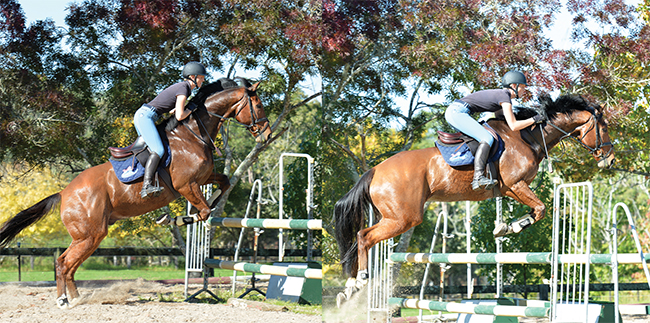 “Then I went to another exercise I like, those angle fences jumping in and out of the combination. Basically this teaches Anna to control the line of the horse, so you are not always approaching on the perpendicular line to the fence. She was coming on an angled line, which teaches the horse to look where the rider is looking, and keep his body straight – the angle across that vertical was going right to left, so you had to keep the horse on a straight line. Then she popped the plank and came back over the oxer, on a left to right angle. That was the main purpose of that, so that she has control of the line of the horse, the horse is looking where she is looking. It’s a slightly more advanced exercise.”
“Then I went to another exercise I like, those angle fences jumping in and out of the combination. Basically this teaches Anna to control the line of the horse, so you are not always approaching on the perpendicular line to the fence. She was coming on an angled line, which teaches the horse to look where the rider is looking, and keep his body straight – the angle across that vertical was going right to left, so you had to keep the horse on a straight line. Then she popped the plank and came back over the oxer, on a left to right angle. That was the main purpose of that, so that she has control of the line of the horse, the horse is looking where she is looking. It’s a slightly more advanced exercise.” 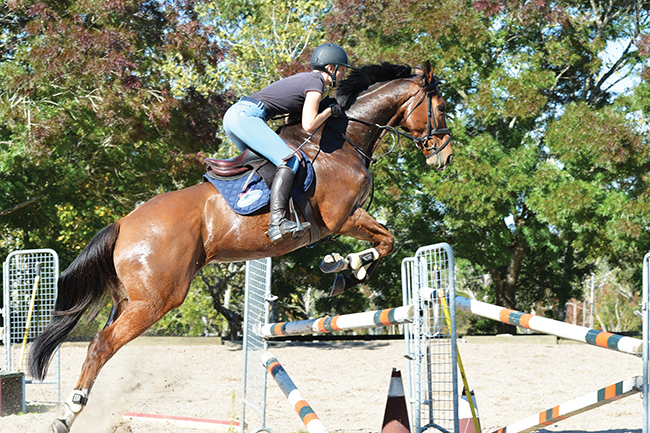 “The other lesson I had this morning, people get excited about having too much bend, you only want as much bend as the shape of the circle – horses too easily bulge shoulders – like that Thoroughbred can on the left rein, because he likes to fall to the right, and bulge his right shoulder when he is going left, and when that happens, you lose your power. It is the coiled spring effect that you want, and when they start to bulge out, they are not looking where you want them to look. It is so important that the rider has control of three parts of the horse’s body – hindquarters, shoulders, head and neck. The rider’s legs totally control the hindquarters, the shoulders are a shared duty between hands and legs, but the more advanced the horse is, the more it is a leg control thing, then the hands totally control the head and neck. You’ve got to coordinate those three parts of the horse’s body into one unit, between two legs and two hands – no seat involved here – and then that keeps the horse on the lines, and that is the beauty of that exercise. Again that will dictate is that is actually happening, if she can come down that long side, off the long side, across the angle, across that fence and then either back over the plank or back over the oxer fence out of the double, again on an angle but the opposing angle.”
“The other lesson I had this morning, people get excited about having too much bend, you only want as much bend as the shape of the circle – horses too easily bulge shoulders – like that Thoroughbred can on the left rein, because he likes to fall to the right, and bulge his right shoulder when he is going left, and when that happens, you lose your power. It is the coiled spring effect that you want, and when they start to bulge out, they are not looking where you want them to look. It is so important that the rider has control of three parts of the horse’s body – hindquarters, shoulders, head and neck. The rider’s legs totally control the hindquarters, the shoulders are a shared duty between hands and legs, but the more advanced the horse is, the more it is a leg control thing, then the hands totally control the head and neck. You’ve got to coordinate those three parts of the horse’s body into one unit, between two legs and two hands – no seat involved here – and then that keeps the horse on the lines, and that is the beauty of that exercise. Again that will dictate is that is actually happening, if she can come down that long side, off the long side, across the angle, across that fence and then either back over the plank or back over the oxer fence out of the double, again on an angle but the opposing angle.”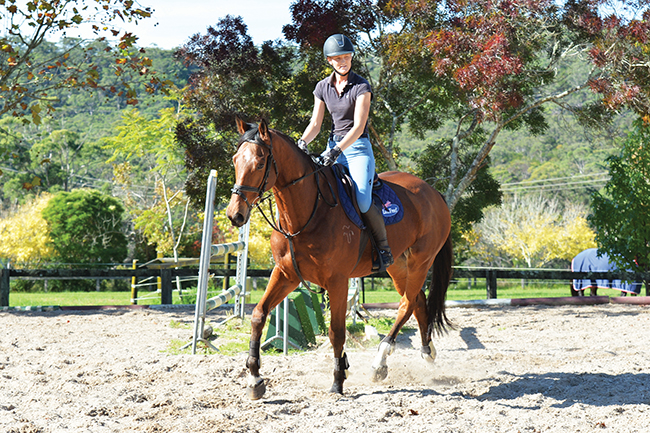
It has been exciting recently with some Australians doing well in Europe – how do you read the sport in Australia at the moment?
“The most exciting thing is what Chugg did at Gothenburg on an eight-year-old mare. That was unbelievable, that was a mare that he and Gabi had bought themselves as a five-year-old, brought back to Australia, produced in Australia, mainly by Gabi with Chugg’s help. We all could see the ease with which she won the class at SIEC last December, and then what Chugg did at the World Cup final proved, we can do it from here. I’ve said this before when I was National Jumping chair, that I hated the idea that people had to go and spend years overseas. We need to develop the university here, we are never going to get to international standard, but we can get close enough that riders only have to go over in the year of the championship, and not have to spend the winter in Europe. No-one wants to spend a winter in Europe, and if you’ve got a great horse, it is so hard to keep the darn thing – if you are going to spend a winter in Europe and your horse is of decent quality, you are going to have dealers hounding you to sell it, and you are in a position where you can’t read a newspaper, you can’t watch the tv… the dream is not what it is cut out to be.”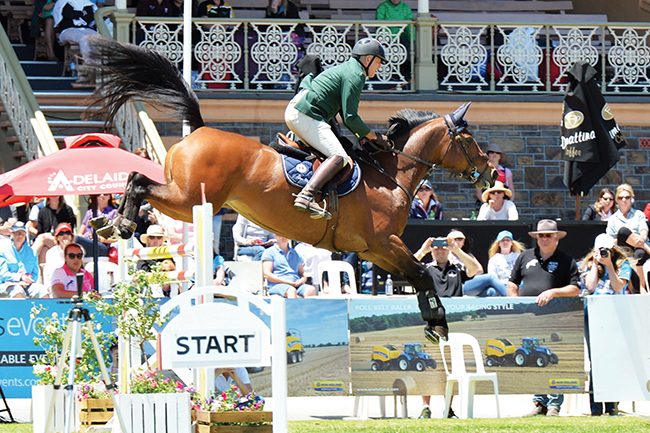
Chris Chugg and Cristalline
“It’s wonderful I’ve been over there many many times, but it is tough. You are away from home, family, and your business – I’m not even contemplating it now because I’ve been there, done that. It is a dream but it is also hard work and tough and that’s if you’ve got a good horse. But if you’ve got a horse that is not good enough, it is the worst place to be. Sitting in Europe with a horse you’d like to sell because you can’t afford to bring it home, and it is not good enough.”
“We need showcase shows in Australia, we don’t need hundreds of them, because we don’t have that many horses, we just need half a dozen good shows a year. I think we are pretty near that now, what with the Nationals at Werribee, fabulous show, the showcase shows that Kerrie and Woody Winning do, this Elysian if it keeps going, Summer Classic, Sydney Royal – shows that bring out good course designers, that’s enough. We don’t need more, just maintain those fabulous shows, and have one event every couple of months, and we can bring horses up. Look at Elysian, the horse that won, Rhys Stones’ Altador – no one would have thought her a 1.60 horse, but she built up over the show. If we can have shows of this standard, then our horses can build up to an international standard. Yes, the riders have to go over and see, you can’t just go straight into the ring and ride with Ludger Beerbaum and those sorts of people, and not be a bit overwhelmed. They need to go over and do a bit of an apprenticeship in Europe, preferably without a horse, then when they get the horse that is good enough, go over, prepare, and do the championship.”
meet the student follows

THE STUDENT
Anna Stenberg is twenty-three, and has been with Vicki for around two months…
“I had a lesson with her while she was in New Zealand for Riding with the Stars. I found her amazing and then I was looking to do a trip over to Australia. I was actually heading for America, and then a friend called and said Vicki needed someone, and within five days I was here.
“I’ve got about six horses at home. My mother has a riding school and we do horses together. That’s what I’ve been doing since I finished Uni, and I love it.”
“I did communications at Uni, majored in PR – but I only did it for something to do before I went off to do my horse stuff. My parents wanted me to have a degree.”
“I had a horse I was riding for a vet, but I gave it back because I was going to travel, so I just have young ones at home. Mum and I are breeding some really nice horses but they are still a few years away.
“Vicki and I seem to have quite a good rapport, she is wonderful at explaining things, and it is great getting to ride different horses. At home I was training with an eventer, who also had lessons from Vicki, Simone Kann.”
“I’m going to try and avoid the real world for as long as possible. I do want to go to America, but it is much easier to come a few hours from home to start with, so I’ll do a wee while with Vicki, then travel and ride and experience as much as possible then take it home and apply it to my own horses. I might buy a good one at home to put the training into. We’ve got good horses at home, we’ve got some great stallions that we are breeding from, but mostly I get Thoroughbreds, slow race horses and try to turn those into jumpers.”
“We are lucky with the Thoroughbreds we have at home, they really are the best athletes, difficult, particularly when they have been through the racing lifestyle, they are a challenge, but if you can work with them, they can be sensational. I love Thoroughbreds. Mum’s always had them, she was a trainer for a long time, they are very willing horses and for the most part have good brains.”
Main things from Vicki?
“She is very constant with what she says, which is fantastic because you know what is expected from you. I think it is so basic a lot of the things she says, you have to have gas, and you have to have brakes, that is so important. You can get so tied up in all these different training techniques, but really what you need are the basics. I think a lot of her management things, how she keeps her horses, are really interesting and good to learn. She has a basis that you can apply to different horses, and that is exciting – you ride the slow one, and the forward one, and the same principles apply. You just have to adapt them to make it work with that horse.”
“If you don’t have those basics, you don’t have anything – getting them to come forward, and having tools to work with. You can’t just have one pace.”
“Vicki’s exercises are amazing, the five and six strides, because I am a bit slack with counting strides, she says you don’t have to count them, but you need to feel them. If you feel like you are not going to get up there in the six, you need to do something about it, or if you are not going to do it in the five, wait for the six, I find that really interesting. Also her work on straightness, and I like the way she doesn’t want their heads tugged down European style, it is much more a functional way of going.”
Vicki was talking a lot about giving not holding…
“Yes and that is a feeling, and it is so unfair, she just has it, and it is hard to get, that feeling of taking as much as you need, to and then letting go as soon as they give to you. It is also knowing exactly when to do one and not the other…”
You can read more articles about Vicki on her who’s who page! http://www.horsemagazine.com/thm/whos-who/roycroft-vicki/



